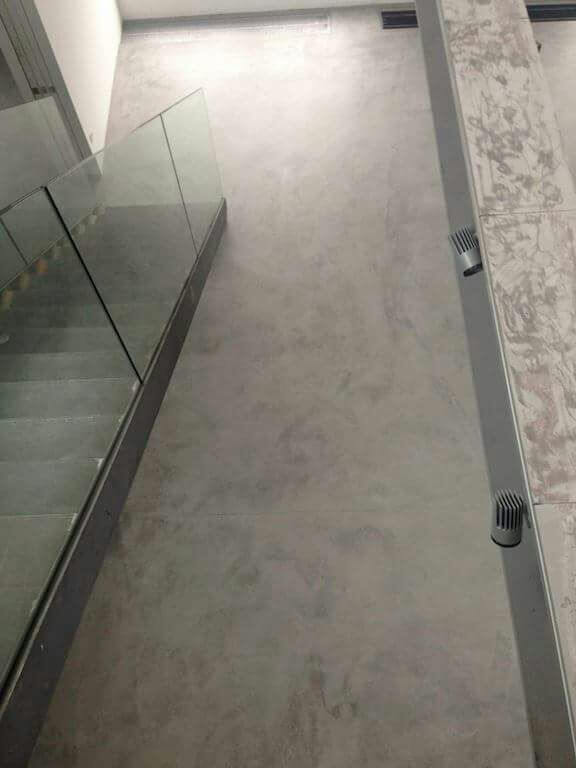
The short answer is NO, microcement and micro concrete are not the same thing. But the misunderstanding between the two products is not surprising.
Micro cement is a concrete based product that is applied to a variety of surfaces, both horizontal and vertical, to create a decorative and hard-wearing finish. And confusingly micro concrete is a concrete based product that can be applied to a variety of surfaces, both horizontal and vertical, to create a decorative and hard-wearing finish.
So, what is the difference between microcement and micro concrete?
Basically, it’s in the thickness of the products.
Micro cement is thinner. In general, microcements are applied at between 0.8 – 1mm per coat (typical application will be 2 – 3 coats but some products may require as many as 6 layers). They are used for cosmetic purposes. Microcements need a solid and smooth base to be applied to, for example a screed or self-leveller, timber or tiles, glass or metal (Some products may not be suitable for use with metal and glass please check the individual characteristics of each product before proceeding).
Micro cements are also known by the following names
- Microcement
- Micro toppings
- Micro screeds
- And a host of other trade names including our very own Politura
Micro concretes on the other hand come in an array of products that can be applied from 2 – 3mm and up to 50mm. Some are used for repairs in industrial and commercial settings i.e. to steps and structures such as steel reinforced pillars and beams. They can be pumped into position and formed into the requisite

shapes with shuttering. Others micro concretes, the thinner ones in general, are used as decorative coatings. Micro concretes also tend to be self-levelling but this can vary from product to product.
Which should you chose?
It very much depends on the project you have in mind, i.e. clearance and costs. If you would like to discuss your job then please feel free to contact our technical team on 01472 268865 for more help.
How is a microcement applied?
The application of a microcement varies from job to job and product to product. Preparation will vary depending on whether you are applying the microcement to a wall, floor, worktop or furniture. The aim of any prep will be to create a solid and smooth foundation for the microcement to be applied to – remember the coating will only be 2 – 3mm thick in its entirety so it won’t hide any lumps and bumps in the surface.
The majority of micro cement systems consist of
- A primer or bond coat (sometimes used between every layer)
- A body coat which usually has larger aggregate and gives the microcement strength and body. Most systems will suggest a multiple application of this body coat, the number varies between products. With Politura we recommend 1 coat of our Medium for walls and 2 for floors as the wear is a lot heavier on a floor – unless you are Spiderman.
- A top coat that is finer than the body coat and helps give a smoother finish.
- Depending on the look you are trying to achieve, these coats may need sanding in between application or can just be sanded once the top coat has been applied.
- An optional pre-sealer may be applied with some systems to ensure that there are not bond breakers between the surface and the sealer and also reduce the chance of roller marks when applying a polyurethane.
- A sealer or finishing coat to protect the finished floor and give it a matt or gloss look. There is a huge range of these sealers and finishes available including densifiers, polyurethanes, and waxes. The sealer you choose will be determined on how you want the finished surface to look and its function. A bedroom wall will not need to have the same stain resistance as a kitchen floor. Talk to your contractor for a full rundown of the options available. For more information on our range of sealers visit our SEALERS page or call our technical team for more help.
Different products also have their own idiosyncrasies. Some may suggest the use of a mesh (why) others may have liquid elements for colours and polymers.
Here at Achtis we tried to keep things as simple as possible. Politura is a powdered system that is coloured to order, so all you have to do is take the lid off the bucket, add water, mix and apply – we’ve even left enough room in the bucket for the water.
To find out more please see our Politura system
Please see below for our range of sealers
Carbon Finish
